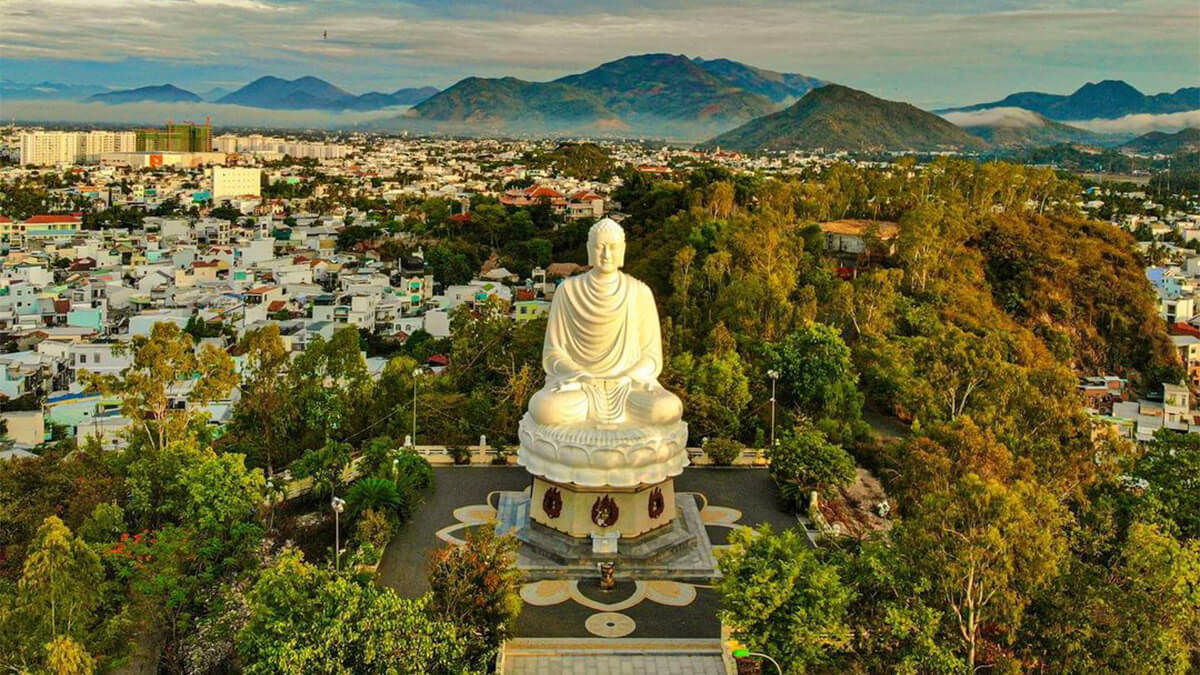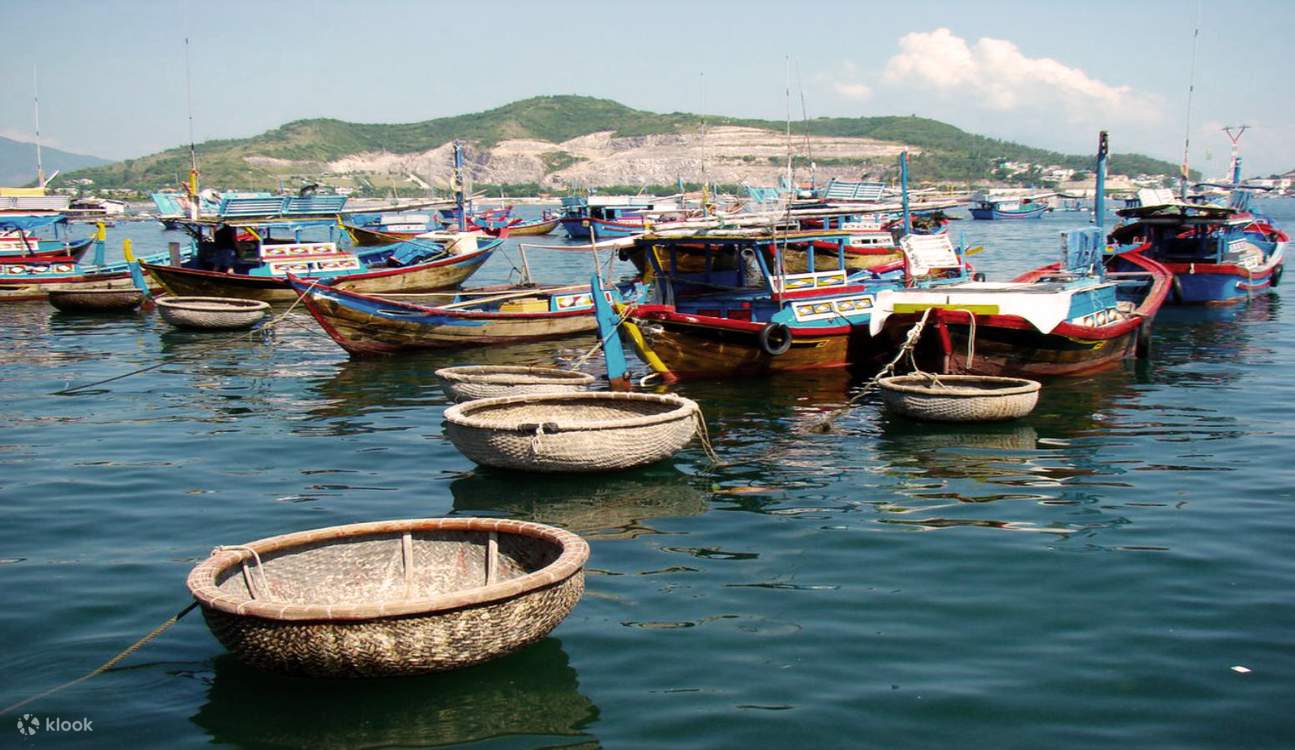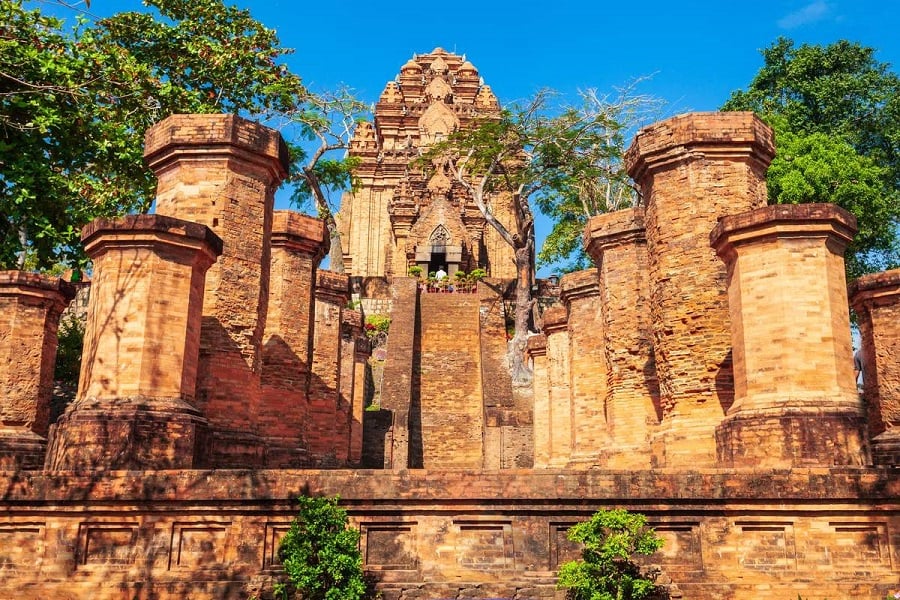The first stop of the tour is Long Son Pagoda. Built-in the 19th century, the ornate pagoda decorated with colorful mosaic dragons sits in the shadow of a towering white Buddha seated on a lotus blossom. Driving through miles of flat rice fields to a rural village, enjoy the opportunity to interact with the local people as they go about their daily lives, with farming and cottage industries as their primary source of income. The village path leads us to the home of one family who weave mats from rushes that grow abundantly in the surrounding area. The whole family lives on mat weaving. Two people working together will weave just four mats in a day, which will be taken to the local market and traded for food and other essentials.
Nha Trang Pagoda Orphanage: where it shelters and cares for over 120 abandoned, orphaned, or street children. They range from several months to 9 years of age. The children of the orphanage are taken care of by a group of Buddhist nuns and volunteers. Their goal is to provide the children with a safe and caring environment that lessens their misfortune and gives their lives greater purpose and meaning. Being a private organization, the orphanage is trying to provide its children with food, shelter, health, and education. The nuns and volunteers at the orphanage have devoted their lives to the wonderful mission – helping the orphans. You’ll learn about the Vietnamese educational system, and you can play and sing with the little children.
Charcoal stove-making village: Considered as a kitchen God to all Vietnamese, so there’s one stove in every family although gas cookers have been used abundantly nowadays. Tourists are told the legend of Kitchen God by craftsmen to experience the fire culture in Vietnam.
Bakery: Visit the household bakery that supplies the surrounding villages with delicious French-style baguettes. The aroma wafting from the primitive oven is tantalizing.
Rice paper making: One of the most typical foods from rice is steamed and processed into round pieces dried in the sun on the bamboo brackets that are on sale in inns or shops.
Conical hat-making village: Conical hat-making village: Manual skill work by women, it’s also your gift for your friends when toward home.
Nha Trang Ancient house: these are traditionally laid out in the same manner throughout the village. Ancestor worship is an important part of daily life in Vietnam and a large area of these small houses is usually reserved for the family altar. Then you’ll have a chance to visit a family and a Vietnamese typical country house. Keep an eye on the ancestor’s shrine. Walk into a small kitchen, a garden, or even a bedroom to get the authentic feelings of the local inhabitants. Most houses are 70 to 150 years old and handed down from generation to generation by the family lineage. The structure of those ancient houses is in the style of the Chinese character Yin. Next, pass through a fruit orchard boasting a plentiful supply of tropical fruits. Lunch in a restaurant on the riverside. Enjoy breezes from the countryside. Afternoon back to your hotel and end of service.

















Reviews
There are no reviews yet.